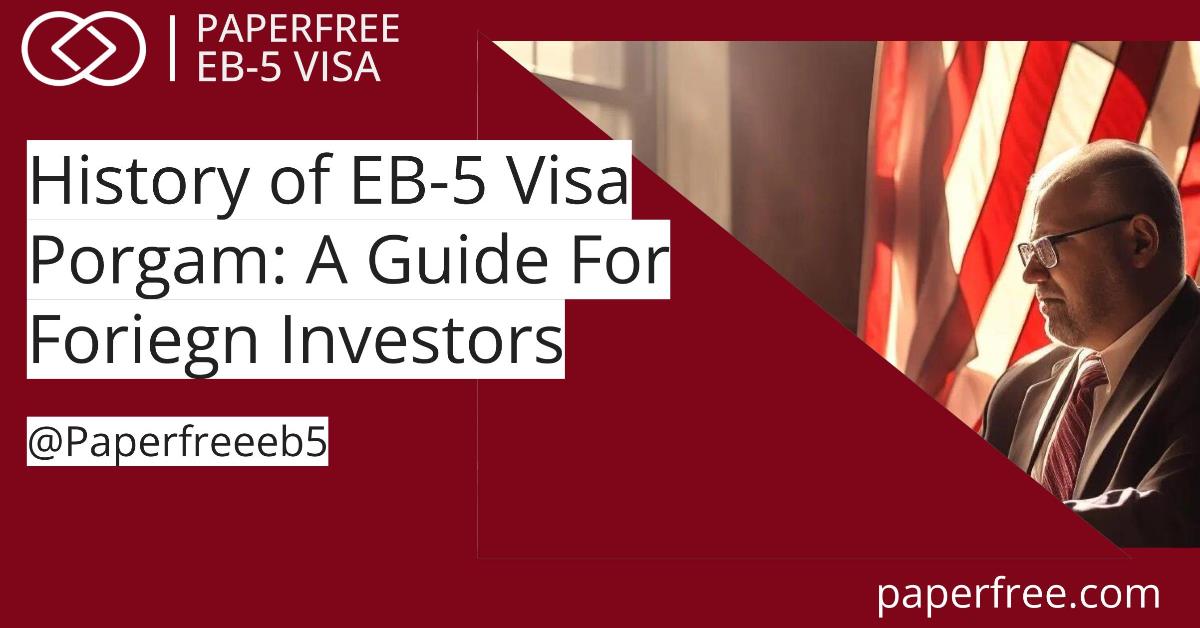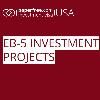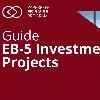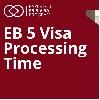PAPERFREE
investment visa
FREE CONSULTATION
History of EB-5 Program - An Outlook For International Investors
Gain insights and guidance for international investors in this detailed outlook on U.S. residency through exploring the comprehensive history of the EB-5 Program.last updated Wednesday, December 24, 2025
#History of EB-5 Program #eb 5 program history
| | by Sidra Jabeen |

QUICK LINKS
AD
Get Access to EB 5 Visa Investment Projects
Key Points History of EB-5 Visa
- 2009: USCIS consolidated EB-5 processing into the California Service Center, closing the previous centers in California and Texas.
- 2009: President Obama's extension of the Immigrant Investor Pilot Program, set to expire on September 30, 2012.
- September 28, 2012: President Obama extended the program again, this time until 2015.
- Recent updates: The program received further extensions, the latest being by President Trump until September 30, 2020.
EB5 History Introduction
The EB-5 Immigrant Investor Program, introduced by the U.S. Congress through the Immigration Act of 1990, marked a significant overhaul of the American immigration system.
This legislation brought comprehensive changes, including alterations to non-immigrant visa categories, an EB 5 extension, modifications in deportation regulations, and an increased legal immigration quota.
The primary EB-5 program aimed to boost the U.S. economy by allowing foreign investors to gain permanent residency and employment rights in the U.S. after investing in American commercial ventures.
In 1993, Congress initiated the Immigrant Investor Pilot Program to further enhance the attractiveness of the EB-5 visa. This initiative led to the formation of EB-5 Regional Centers, unique business entities authorized by the USCIS to manage EB-5 investments and foster job creation.
Learn more about EB 5 program timeline

EB-5 Reform Acts of the 1990s
In the late 1990s, the EB-5 visa program underwent substantial reforms due to concerns about insufficient regulatory oversight and instances of fraud in EB-5 investments, notably the case of U.S. v. O’Connor in the U.S. The District Court revealed various fraudulent practices within the EB-5 investment framework.
As a response, the Administrative Appeals Office (AAO) of USCIS, which handles appeals, implemented new regulations in 1998 to tighten the program's requirements. These revisions mandated that investors demonstrate their EB-5 investments were derived from legitimate sources, ensured their active engagement in the EB-5 projects, and prohibited guarantees of investment returns.
USCIS initially tried to apply these updated rules to existing EB-5 cases, but this retroactive application was deemed illegal following the Chang v. U.S. court decision. Subsequently, there was a notable decline in the number of EB-5 applications following the implementation of these stricter regulations.
To guarantee the consistent application of EB-5 regulations across all new submissions, the Administrative Appeals Office (AAO) established four critical precedent decisions in the 1990s: Matter of Ho, Matter of Hsiung, Matter of Izummi, and Matter of Soffici. These rulings remain authoritative for current EB-5 applications.
Through these decisions, the AAO established critical criteria for the program, focusing on aspects such as the eligible commercial entities for EB-5 investments, criteria for determining the legality of funding sources, and guidelines for administering the investment.
EB-5 Visa Reforms of the 2000s
According to the EB5 reauthorization update, the Basic Pilot Program Extension and Expansion Act of 2003 was enacted by Congress as a measure to rejuvenate the EB-5 program. Under this act, the Government Accounting Office (GAO) was tasked with conducting an in-depth review of the EB-5 visa program.
The investigation revealed the underutilization of the program, showing that the actual number of visas granted annually was considerably lower than the available quota of 10,000. This led to further reforms in the program.
A significant outcome of these reforms was the establishment of the Investor and Regional Center Unit (IRCU) by USCIS in 2005.
The IRCU is a specialized body responsible for various aspects of the EB 5 Green Card program, including auditing cases, designing forms, developing regulations, and formulating policies.
The creation of the IRCU has enhanced coordination and improved the reliability of the EB5 program.
Changes in EB5 Policy in the History of the EB-5 Program
In 2009, USCIS updated its policy guidelines for the EB-5 program, leading to the centralization of processing operations at the California Service Center (CSC). Before this, EB-5 processing was divided between two locations, in California and Texas.
While the direct investment aspect of the EB5 program is a permanent element of U.S. immigration legislation, according to the History of EB5 Program, the broader EB-5 program, despite not having permanent status, has been regularly reauthorized over time.
Modernization changes in 2019
In July 2019, USCIS announced a series of updates to the EB 5 program, which became effective on November 21, 2019. These updates involved significant changes, such as raising the minimum investment threshold from $500,000 to $900,000 in Targeted Employment Areas (TEAs) and from $1 million to $1.8 million in other regions.
Additionally, the responsibility for designating TEAs shifted from individual states to USCIS. The changes also introduced a provision allowing certain investors to retain their priority dates.
EB-5 reform and integrity act of 2022
The History of the Eb-5 Program is very complex. In March 2022, following a nearly nine-month hiatus, Congress reinstated the EB-5 Regional Center program through the EB 5 Reform and Integrity Act of 2022. This legislation extends the program's validity until September 30, 2027.
According to the bill's new provisions, investors must commit a minimum of $1,050,000 or a reduced amount of $800,000 if the investment is made in areas with high unemployment rates.
Impact of the EB-5 Green Card Program on the US Economy
Numerous immigrant investors have recognized the EB-5 investor visa program as an effective and practical way for those with sufficient investment capital to gain permanent residency in the U.S. History of the EB-5 Program.
This program not only grants investors permanent residency but also contributes to the growth of the U.S. economy.
A 2003 study by the Government Accountability Office (GAO) highlighted that EB-5 participants had invested $1 billion across 17 states, with a notable preference for California. These investments spanned various sectors, including real estate, import-export businesses, technology development, agriculture, hospitality, and manufacturing.
Since forming the Investor and Regional Center Unit (IRCU) in 2005, USCIS has been committed to enhancing the EB-5 program, making it a more equitable and viable pathway to obtaining a green card.
Future of EB-5 Visa
Increased Regulation and Oversight: Recent reforms, primarily through the EB-5 Reform and Integrity Act of 2022, indicate tighter regulation trends in EB 5 program history. This aims to reduce fraud and ensure that the program effectively stimulates the U.S. economy through foreign investment as per the history of EB-5 Visa.
- Adjustment in Investment Amounts
The trend of increasing the minimum investment amounts may continue, especially if there is a desire to keep pace with inflation and to reflect the actual economic impact required from each investment. - Focus on Targeted Employment Areas (TEAs)
The program may continue to emphasize directing investments into TEAs, which include rural areas and regions with high unemployment rates. This ensures that the program benefits areas that need the most economic stimulation. - Technological Enhancements
As with many areas of immigration, there could be a push towards using more advanced technology to streamline application processing, enhance transparency, and improve communication with applicants. - Periodic Reauthorization and Policy Changes
Given its nature as a program that requires regular reauthorization by Congress, the EB-5 visa may undergo periodic policy changes and adjustments, reflecting the political and economic priorities of the time. - Global Economic Impact
Global economic trends and U.S. relations with key countries that are sources of EB-5 investors (like China and India) will likely influence the program's dynamics. - Demand Among Investors
The program's future will depend on its continued popularity among foreign investors. Factors influencing this include the overall U.S. economic health, the success rates of EB-5 projects, and the comparative attractiveness of other countries' investor visa programs. - Possible Permanency or Structural Changes
Depending on how effectively it achieves its goals, Congress could consider making the program permanent or introducing significant structural changes to its framework.
Book Your Free Consultation with Paperfree EB-5 Visa Experts. Get Personalized Advice and Investment Plans. Book Your Free Consultation Today!

Why Paperfree.com?
By leveraging PaperFree.com's capabilities, applicants can more easily and confidently handle the intricacies of the EB-5 process. This simplifies their path towards U.S. residency and makes the journey more orderly and less daunting.
For more detailed information and guidance on each of these steps, resources and assistance are available at Paperfree EB5 Investors Magazine
With PaperFree.com, the goal of obtaining U.S. residency through the EB-5 visa program becomes a more structured and achievable endeavor.
Free Investment Visa Consultation
Paperfree Investment Visa Social Channel - Instagram
Pages Related to: History of EB-5 Program, eb 5 program history
- EB 5 investment projects list USA

- EB5 Investment Projects | Here's All You Need To Know

- Papefree EB5 investors magazine your source for EB5 insights. EB5 News.

- EB5 Investment Visa Guide 2025

- Best EB5 Regional Center List | American EB5 Regional Center

- Paperfree Investment Visa EB-5 Program is Your Your Clear Path to Green Card USA

- EB5 Processing Time: A Journey Towards Green Card 2026 | Paperfree.com

- July 2025 Visa Bulletin: EB-5 Investment Visa Program Shows Positive Movement

Popular for the Investment Visa Program
Benefits of the EB-5 Visa Program | Guide
